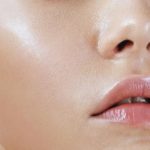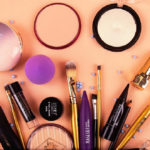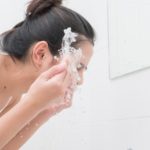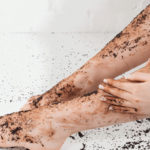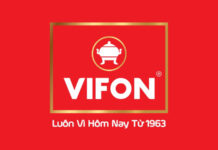Japanese domestic products are gaining popularity in the Vietnamese cosmetics market, with their effectiveness spreading through word-of-mouth among hand-carried cosmetic business owners, despite the availability of domestically produced alternatives. Hada Labo is a prime example, and we’re here to help you determine which is better – the Hada Labo skincare line from Japan or Vietnam.
1. About Hada Labo

Hada Labo is a renowned pharmaceutical and cosmetic brand in Japan, under the Rohto Pharmaceutical Group. Introduced in 2004, the brand quickly gained popularity and witnessed rapid growth. Soon after, Hada Labo expanded its reach by opening showrooms and investing in multiple manufacturing facilities across various countries. As of now, Hada Labo has a presence in 13 countries worldwide and continues to expand its global footprint.
Hada Labo offers three main product lines: moisturizing, whitening, and anti-aging. Their diverse range includes lotions, essences, creams, and serums to cater to different skincare needs.
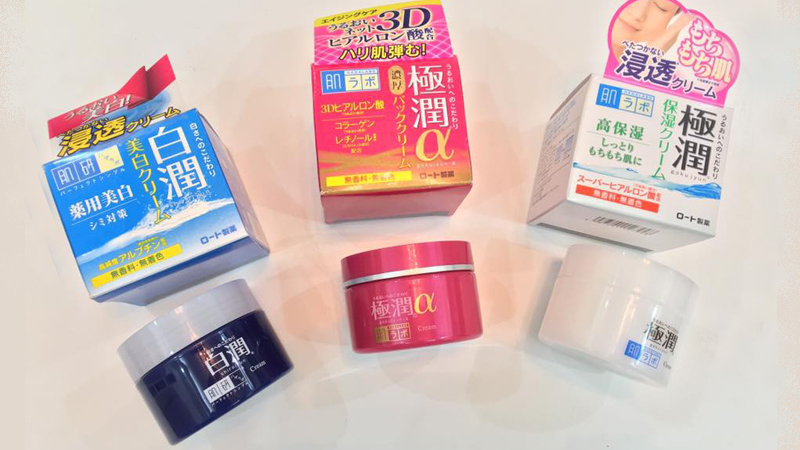
2. Comparing the Ingredients of Japanese and Vietnamese Products
Overall, the Hada Labo skincare lines from Japan and Vietnam share similar ingredients. Below is a detailed look at the Hada Labo creams currently available in the market:
- Hada Labo Perfect White Arbutin Cream
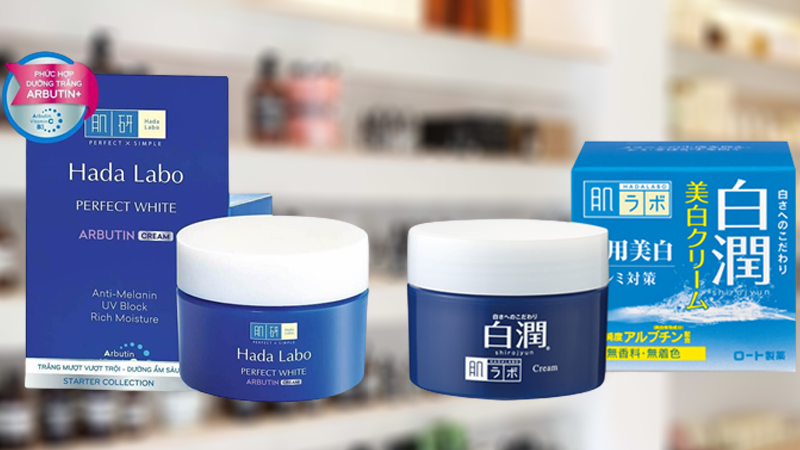
Chemical composition of the Vietnamese product:
Arbutin, Vitamin C, B3, HA, nano HA, Water, Cyclopentasiloxane, Methyl Methacrylate Crosspolymer, Dipropylene Glycol, Niacinamide, Pentylene Glycol, Methylene Bis-Benzotriazolyl Tetramethylbutylphenol, Squalane, Glycerin, Caprylic/Capric Triglyceride, Arbutin, Sodium Ascorbyl Phosphate, Sodium Hyaluronate, Hydrolyzed Hyaluronic Acid, Ethylhexyl Methoxycinnamate, Simmondsia Chinensis (Jojoba) Seed Oil, Beta Carotene, Zea Mays (Corn) Oil, Tocopherol, Lavandula Hybrida Oil, Geraniol, Sodium Hydroxide, Dipotassium Glycyrrhizate, Phytosteryl/Octyldodecyl Lauroyl Glutamate, Xanthan Gum, Sodium Metabisulfite, Sorbitan Stearate, Stearyl Alcohol, Behenyl Alcohol, Carbomer, Polysorbate 60, Polyvinyl Alcohol, Acrylates/C10-30 Alkyl Acrylate Crosspolymer, Polystyrene, Butylene Glycol, Glycol Dimethacrylate Crosspolymer, Decyl Glucoside, Talc, Dimethicone, Phenyl Trimethicone, C12-15 Alkyl Benzoate, Dimethiconol, Dimethicone Crosspolymer, Propylene Glycol, Disodium EDTA, Methylparaben, Propylparaben.
Chemical composition of the Japanese product:
Tranexamic acid (White tranexamic acid), Vitamin C phosphate Mg (Vitamin C derivative), Vitamin E, Hyaluronic acid Na-2 Hydrolyzed hyaluronic acid (Nanosized hyaluronic acid), Sugar squalane, Shea butter, DPG, Diglycerin, Meadowfoam oil, Dimethicone, Lipophilic, Tyge glyceryl stearate, POE isostearate (20) sorbitan, Carboxyvinyl polymer, Editate, Hydroxyethyl cellulose, Sodium pyrosulfite, Behenyl alcohol, Stearyl alcohol, Phenoxyethanol, Paraben.
Both products share common whitening agents such as Arbutin, Vitamin C, and Vitamin B3. These ingredients inhibit melanin production, reducing the appearance of dark spots, age spots, and uneven skin tone. Additionally, HA and nano HA provide comprehensive hydration, resulting in smooth and radiant skin.
The Japanese version also contains squalane and shea butter, which provide intense moisture and help minimize the appearance of pores.
Effects after use:
The cream effectively nourishes and brightens the skin, reducing dark spots and promoting even skin tone. With continued use, it strengthens the skin’s defense mechanism and minimizes the impact of environmental irritants like redness and tiny bumps. It also addresses mild pigmentation issues and prevents the formation of new dark spots and wrinkles by fighting against the effects of oxidation.
After application, the skin feels incredibly smooth and moisturized. The cream-gel formula blends seamlessly into the skin and absorbs quickly without leaving a sticky residue. However, the Vietnamese version has a slightly stronger fragrance, which may be a concern for those sensitive to scented products.
- Hada Labo Advanced Nourish Hyaluron Cream
Chemical composition of the Vietnamese product:
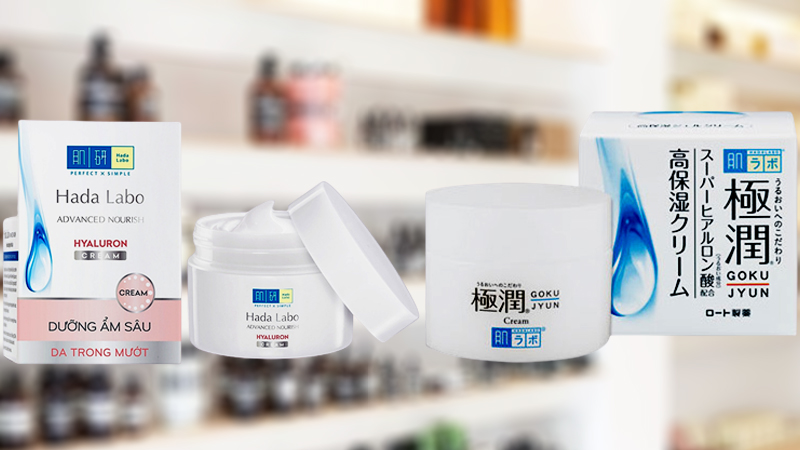
Water, Glycerin, Dipropylene Glycol, Diglycerin, Squalane, Caprylic/Capric Triglyceride, Carbomer, Dimethicone/Vinyl Dimethicone Crosspolymer, C12-14 Pareth-12, PEG-20 Sorbitan Isostearate, Triethanolamine, Stearyl Alcohol, Glyceryl Stearate, Behenyl Alcohol, Phytosteryl/Octyldodecyl Lauroyl Glutamate, Disodium EDTA, Methylparaben, Propylparaben.
Chemical composition of the Japanese product:
Water, Glycerin, DPG, diglycerin, squalane, glyceryl tri (caprylic / capric acid), Na hyaluronic acid (super hyaluronic acid), hyaluronic acid Na, di (phytosteryl / octyldodecyl) lauroylglutamate, carbomer, stearyl alcohol, behenyl alcohol, isostearin Acid PEG-20 sorbitan, glyceryl stearate, TEA, EDTA-2 Na, dimethicone, methyl paraben, propyl paraben.
Both products share common moisturizing agents such as HA (Hyaluronic Acid), which has made Hada Labo famous for its ability to absorb up to six liters of water per gram. This powerful ingredient rescues dry, rough, and dull skin. The combination of Nano HA and SHA not only provides intense moisture but also locks it in, stimulating cell regeneration.
Additionally, the cream is free from alcohol, mineral oil, artificial colors, and fragrances, making it suitable even for sensitive skin. The remaining ingredients vary to accommodate the climatic conditions of each country.
Effects after use:
The primary effect of this product line is to provide intense hydration, resulting in plump and supple skin. It addresses various skin concerns, including dryness, fine lines, premature aging, dullness, acne, and uneven skin tone.
The lightweight formula absorbs quickly, leaving the skin feeling smooth and firm. Even in cold weather, it prevents dryness and keeps the skin moisturized.
- Hada Labo Pro Anti-Aging & Lifting Cream
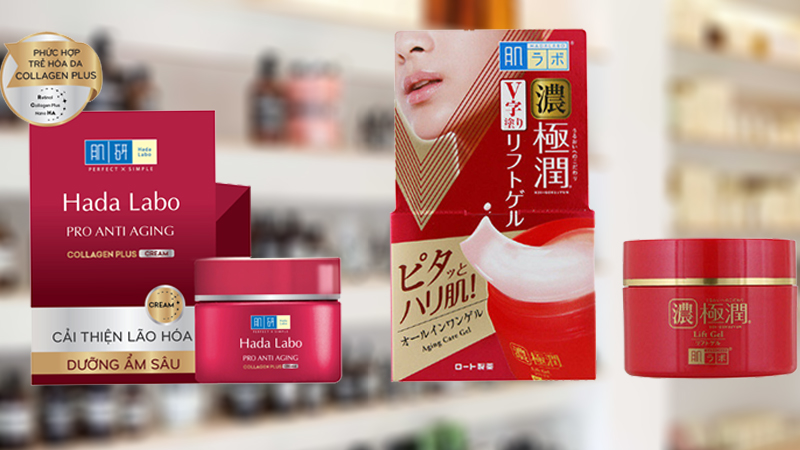
Chemical composition of the Vietnamese product:
Hydrolyzed Collagen, Sodium Hyaluronate, Hydrolyzed Hyaluronic Acid, Sodium Acetylated Hyaluronate, Retinyl Palmitate, Water, Caprylic/Capric Triglyceride, Dipropylene Glycol, Cyclopentasiloxane, Simmondsia Chinensis (Jojoba) Seed Oil, Sorbitan Stearate, PEG-20 Sorbitan Isostearate, Hydrolyzed Soy Protein, Beta-Carotene, Tocopherol, Limnanthes Alba (Meadowfoam) Seed Oil, Helianthus Annuus (Sunflower) Seed Oil, Zea Mays (Corn) Oil, Pullulan, PPG-10 Methyl Glucose Ether, Carbomer, Triethanolamine, Phenyl Trimethicone, Dimethiconol, C12-15 Alkyl Benzoate, Dimethicone Crosspolymer, Disodium EDTA, BHT, Methylparaben, Propylparaben.
Chemical composition of the Japanese product:
Water, Glycerin, BG, Glyceryl, Squalane, Tri glyceril, DPG, PPG-10 methyl glucose, Behenyl alcohol, PEG-20 sorbitan isostearate, Sorbitan stearate, Hyaluronic acid crosspolymer Na, Acetyl hyaluronic acid Na, Hyaluronic acid Na, Hydrolyzed hyaluronic acid, Hydrolyzed elastin, Tetrapeptide-5, Hydrolyzed collagen, Lactobacillus / Soy Milk Fermented Solution, Macadamia Nut Fatty acid Phytosteryl, Lauroylglutamate Di, Yellowfin Bark Extract, Meadow Foam Oil, Pentylene Glycol, Orchids, Carbomer, Hydroxyethyl cellulose, Acrylated retaining clips polymer ammonium, EDTA-2Na, TEA, methylparaben.
Both products share common moisturizing agents such as Hyaluronic Acid and Hydrolyzed Hyaluronic Acid. The Hada Labo Pro Anti-Aging line also contains Hydrolyzed Collagen and Elastin to boost collagen production, significantly improving the appearance of fine lines and wrinkles.
Additionally, extracts of dried rose leaves, rhododendron, and vitamin C derivatives contribute to the skin’s whitening effect.
Effects after use:
The primary effect of this product line is anti-aging. By boosting collagen production, it improves skin elasticity and reduces the appearance of wrinkles, giving the skin a youthful appearance. It also stimulates cell regeneration, enhances collagen synthesis, removes dead skin cells, and fights free radicals that cause aging. Other benefits include moisturizing, whitening, and maintaining a flawless complexion.
Daily use, combined with basic skincare routines and facial massage techniques, will result in firmer skin and a more youthful appearance.
3. Japanese or Vietnamese Products – Which to Choose?
Some consumers may prefer Japanese products due to their perception of higher quality. However, regardless of the production location, Hada Labo maintains the key ingredients that have made the brand successful. Moreover, when producing for a specific market, manufacturers conduct thorough research and testing to ensure the products’ effectiveness and suitability for the target audience.
Therefore, we recommend choosing Hada Labo products tailored for the Vietnamese market as they are specifically formulated to suit the unique needs of Vietnamese skin and environmental conditions, including climate, weather, and water sources.
This article compares Hada Labo products from Japan and Vietnam. We hope it helps you make an informed decision. Don’t forget to check out our other skincare guides!

























